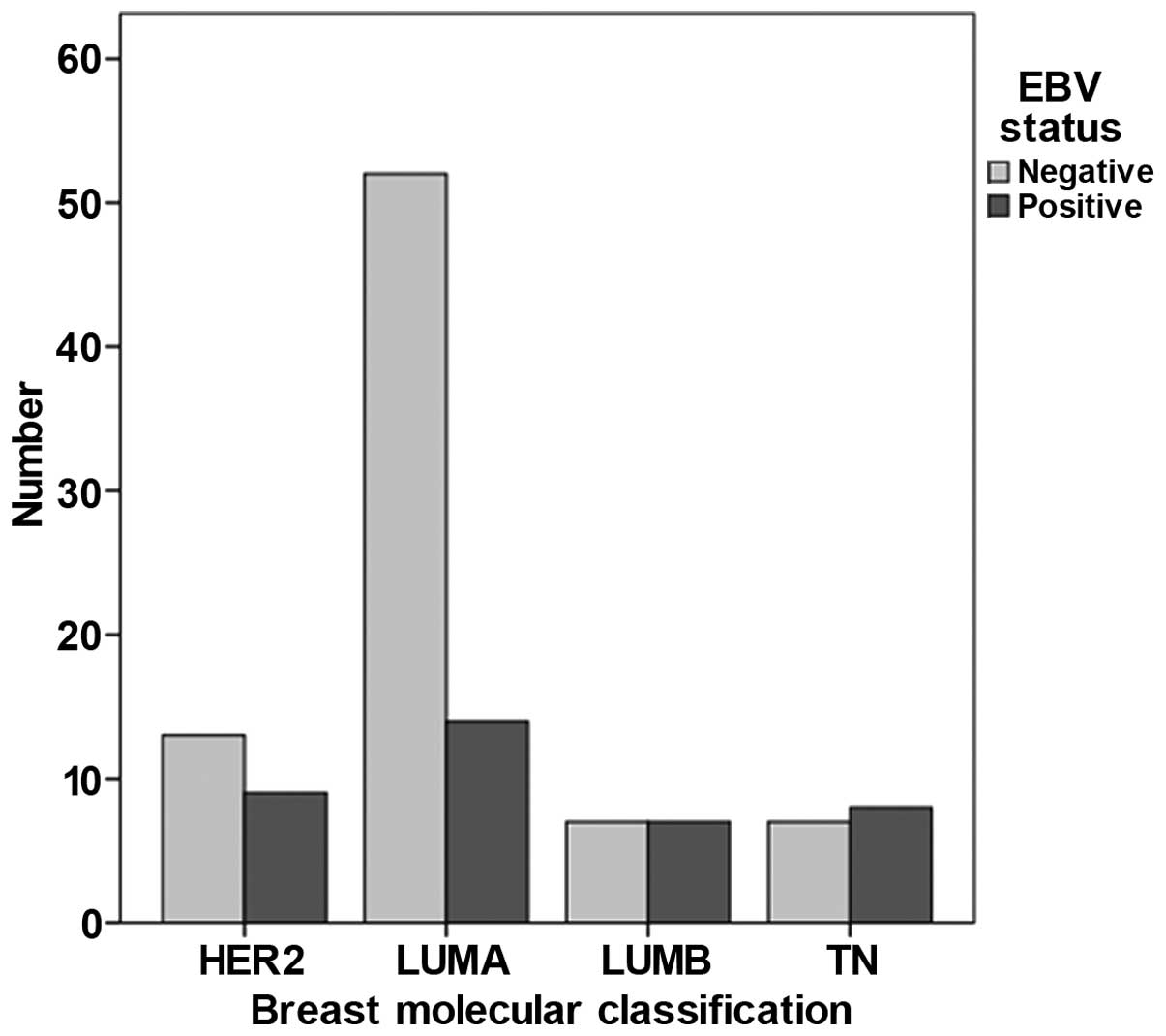Outcome of Epstein-Barr virus-associated primary breast cancer
- Authors:
- Published online on: November 20, 2014 https://doi.org/10.3892/mco.2014.459
- Pages: 295-298
-
Copyright: © Mazouni et al. This is an open access article distributed under the terms of Creative Commons Attribution License.
Metrics: Total
Views: 0 (Spandidos Publications: | PMC Statistics: )
Total PDF Downloads: 0 (Spandidos Publications: | PMC Statistics: )
Abstract
The presence of the Epstein‑Barr‑virus (EBV) has been reported to be a pathogenic factor in breast cancer (BC). We previously demonstrated the aggressiveness of EBV‑positive BC. The purpose of the present study was to evaluate the effect of EBV on the prognosis of BC according to the BC phenotype. A total of 117 patients with primary BC previously tested for the presence of EBV were evaluated. The presence of the virus was evaluated in breast specimens using quantitative PCR (qPCR). Disease‑free survival (DFS) and overall survival (OS) were evaluated for 4 molecular subtypes, namely luminal A and B (lumA and lumB, respectively), human epidermal growth factor receptor 2 (HER2) and triple‑negative (TN) subtypes and according to the EBV status. EBV positivity was observed in 32.5% of the cases. TN, HER2 and lumB tumours were more frequent among EBV‑BC cases (P=0.02). The DFS rates were different between BC subtypes (P=0.002), but the differences were not statistically significant when the cases were stratified according to the EBV status (P=0.08 for EBV‑negative and 0.06 for EBV‑positive cases). The OS rates were similar for BC subtypes (P=0.50) and when the cases were stratified according to the EBV status (P=0.16 and P=0.67 for EBV-positive and -negative cases, respectively). EBV was not associated with DFS or OS, in contrast to BC phenotypes, tumour size or nodal status. Therefore, EBV positivity was found to exert no effect on survival, despite its association with aggressive BC phenotypes.










